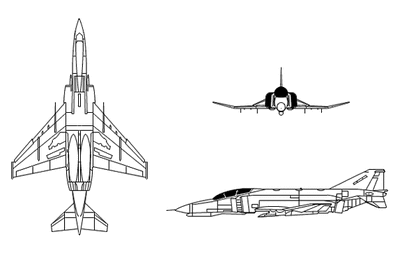Three Airmen, One Naval Aviator Returned To U.S. For Burial
The Department of Defense POW/Missing Personnel Office has released the names of three aviators missing in action from the Vietnam war whose remains have returned to the U.S. for military burials.

Air Force Lt. Col. Edward D. Silver, 34, of Junction City, Ore., was buried on June 6, in Arlington National Cemetery, near Washington D.C. On June 7, there was a group burial service at Arlington National Cemetery honoring Silver and the other crew member, Maj. Bruce E. Lawrence, 25, of Easton Pa. Lawrence was buried on Sept. 21, 2011, in his hometown.
On July 5, 1968, Silver and Lawrence, were flying the lead F-4C Phantom II aircraft of a two-ship formation, on a night armed-reconnaissance of enemy targets, in Quang Binh Province, North Vietnam. Other pilots flying in the area reported that they witnessed anti-aircraft fire striking the aircraft shortly before it crashed. No parachutes or signs of survivors were seen. In 1993, a joint U.S./Socialist Republic of Vietnam (S.R.V.) team traveled to Quang Binh Province to investigate a possible site related to the crash. Harsh terrain and safety concerns limited access to the location of the aircraft. From 1998 to 2000, joint U.S./S.R.V. teams interviewed witnesses, excavated several aircraft crash sites in the area, and recovered human remains. Additional recovery of military equipment, related to Silver and Lawrence’s crash, confirmed that two individuals were in the aircraft at the time of the incident.
Among other forensic identification tools and circumstantial evidence, scientists from the Joint POW/MIA Accounting Command and the Armed Forces DNA Identification Laboratory used mitochondrial DNA – which matched that of both Lawrence and Silver’s living relatives – as well as nuclear DNA to identify the two men.

Air Force Capt. Virgil K. Meroney III, 25, of Fayetteville, Ark., will be buried June 9, in his hometown. On March 1, 1969, Meroney was a crew member aboard an F-4D Phantom II aircraft that crashed while carrying out a nighttime strike mission in Kahammouan Province, Laos. Nearby U.S. aircrews reported seeing Meroney’s aircraft hit by enemy fire. No parachutes were seen after the aircraft was hit. Heavy enemy presence in the area prevented recovery efforts.
In 1994, a joint U.S./Lao People’s Democratic Republic (L.P.D.R.) team investigated the crash site in Khammouan Province, Laos. The team located aircraft wreckage of an F-4 and military equipment, which correlated with Meroney’s aircraft. From 2000 to 2011, additional joint U.S/L.P.D.R recovery teams investigated and excavated the crash site multiple times. Teams recovered human remains, and military equipment, including an engine data plate, a radio call-sign plate, and a military identification card bearing Meroney’s name.
Scientists from the JPAC used circumstantial evidence and forensic identification tools including dental comparisons, and radiograph comparisons in the identification of Meroney.

And Navy Lt. William E. Swanson, 27, of Zimmerman, Minn., will be buried June 11, at Fort Snelling in Minneapolis. On April 11, 1965, Swanson was the pilot of an A-1H Skyraider aircraft that crashed while on an armed reconnaissance mission over Khammouan Province, Laos. Other Americans in the area reported seeing his aircraft being struck by enemy fire and no parachute was deployed prior to the crash. Recovery efforts were not possible due to enemy presence in the days following the crash.
In October 2000, a joint U.S./Lao People’s Democratic Republic (L.P.D.R.) team was investigating a different crash in Khammouan Province. Local villagers reported an aircraft crash site nearby, in the mountains north of the town of Boualapha. The team surveyed the site and found small pieces of aircraft wreckage, and unexploded bombs and rockets of the same type that Swanson’s A-1H had been carrying.
In 2009, a joint U.S./L.P.D.R. recovery team excavated the site and found material evidence and military equipment. In 2010, another U.S./L.P.D.R. team completed the excavation and recovered human remains and additional evidence. Two data plates, with numbers matching Swanson’s aircraft, were found at the site.
Scientists from the Joint POW/MIA Accounting Command used circumstantial and material evidence to identify Swanson’s remains.
 ANN's Daily Aero-Term (04.20.24): Light Gun
ANN's Daily Aero-Term (04.20.24): Light Gun Aero-News: Quote of the Day (04.20.24)
Aero-News: Quote of the Day (04.20.24) ANN's Daily Aero-Linx (04.21.24)
ANN's Daily Aero-Linx (04.21.24) Aero-News: Quote of the Day (04.21.24)
Aero-News: Quote of the Day (04.21.24) ANN's Daily Aero-Term (04.21.24): Aircraft Conflict
ANN's Daily Aero-Term (04.21.24): Aircraft Conflict





